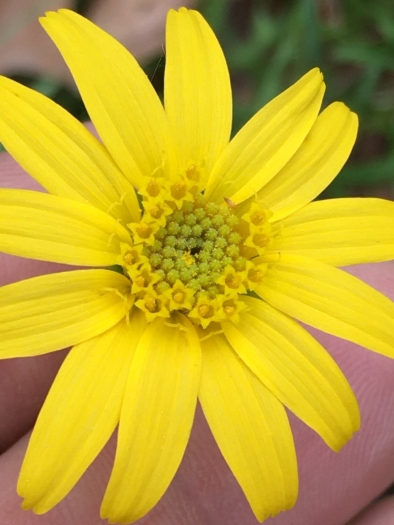Common Leopardbane
(Arnica acaulis)
Common Leopardbane (Arnica acaulis)
/
/

Becky Dill
Public Domain
Image By:
Becky Dill
Recorded By:
Copyright:
Public Domain
Copyright Notice:
Photo by: Becky Dill | License Type: Public Domain | License URL: http://creativecommons.org/publicdomain/zero/1.0/ | Rights Holder: Becky Dill | Publisher: iNaturalist | Date Created: 2020-05-31T16:06:31Z |






































Estimated Native Range
Summary
Arnica acaulis, commonly known as Common Leopardbane, is a perennial herb native to the open woodlands and forest edges in the southeastern United States, ranging from Alabama and Florida north to New Jersey and Pennsylvania. It typically grows to a height of 1 to 2 feet (0.3 to 0.6 meters) with a similar width. The plant features basal rosettes of green leaves and daisy-like yellow flowers that bloom in the spring and are moderately showy. The flowers are attractive to pollinators such as bees and butterflies.
Common Leopardbane is valued for its medicinal properties, as Arnica has been used traditionally to reduce bruising and swelling. It is suitable for naturalistic plantings, woodland gardens, and as a border plant in partially shaded areas. While it prefers part shade, it can tolerate full sun if the soil remains consistently moist. It thrives in well-drained soils with medium moisture. Gardeners should be aware that Arnica acaulis can be sensitive to overwatering and root rot. It is not known for being invasive or having aggressive roots, making it a safe choice for most garden settings.CC BY-SA 4.0
Common Leopardbane is valued for its medicinal properties, as Arnica has been used traditionally to reduce bruising and swelling. It is suitable for naturalistic plantings, woodland gardens, and as a border plant in partially shaded areas. While it prefers part shade, it can tolerate full sun if the soil remains consistently moist. It thrives in well-drained soils with medium moisture. Gardeners should be aware that Arnica acaulis can be sensitive to overwatering and root rot. It is not known for being invasive or having aggressive roots, making it a safe choice for most garden settings.CC BY-SA 4.0
Plant Description
- Plant Type: Herb
- Height: 1-3 feet
- Width: 0.3-0.6 feet
- Growth Rate: Moderate
- Flower Color: Yellow
- Flowering Season: Spring, Summer
- Leaf Retention: Deciduous
Growth Requirements
- Sun: Part Shade, Full Sun
- Water: Medium
- Drainage: Medium, Fast
Common Uses
Border Plant, Low Maintenance, Rock Garden, Showy Flowers
Natural Habitat
native to the open woodlands and forest edges in the southeastern United States, ranging from Alabama and Florida north to New Jersey and Pennsylvania
Other Names
Common Names:
Scientific Names: , Arnica acaulis, Arnica nudicaulis, Doronicum acaule, Arnica claytonii, Doronicum claytonii, Doronicum nudicaule, Grammarthron oppositifolium, Peritris ovatifolia,
GBIF Accepted Name: Arnica acaulis (Walter) Britton